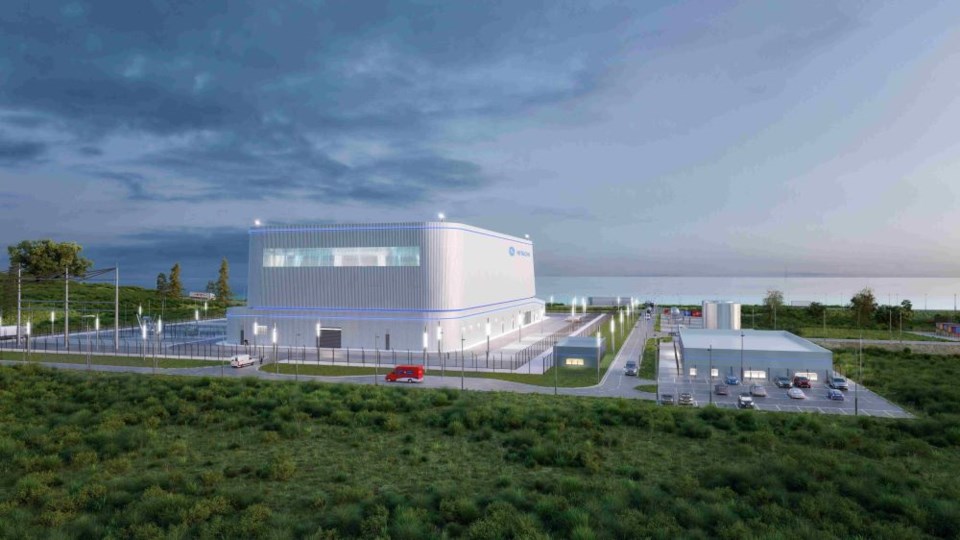REGINA - SaskPower has posted a report on its website regarding the engagement sessions it held for the small modular reactor (SMR) development project.
The “What We Heard” report covers activity from September to December. The Crown corporation reported there were 38 municipal information sessions, 481 people who attended in-person community events, 183 participants for an online engagement hub, 193 virtual project briefings and 659 views from online learning events.
Eight events were held in six communities in the Estevan study area. In addition to the Energy City, sessions were held in Alameda, Carlyle, Lampman, Oxbow and Weyburn. Drop-in events were in Outlook and Lucky Lake for the Elbow area.
“From October to December 2022, we also attended a variety of local events to reach a wider demographic within the study areas – we called these pop-up events,” SaskPower wrote. “Project team members were stationed at a table and readily available to share information or answer questions.”
These were in Estevan, Loreburn, Outlook and Lucky Lake.
A virtual open house was held on Dec. 7, 2022, to provide information about the project, allow people to learn from industry experts and ask current nuclear host community leaders questions about their experiences.
Over 800 people registered to access the virtual open house site, and over 400 participants
attended the live event.
“Having informed voices available to Saskatchewan was helpful, as each speaker brought their own expertise and experience and answered many questions from attendees.”
Nearly 200 people participated in an online engagement hub.
Engagement with Indigenous people has occurred and will continue, SaskPower said.
Throughout the engagement activities, SaskPower said it heard a wide variety of comments. They ranged from people who are highly enthusiastic about the potential for emissions-free nuclear energy, to concerns about nuclear safety and the impacts of nuclear power on the environment. Others were interested in learning more about power supply options and the decision-making process.
“Most of what we heard were questions,” SaskPower said. “A comprehensive list of questions and answers are being compiled in a companion document that will be published shortly.
Comments and questions from the engagement activities were collected and grouped by theme.
The most recurring theme was nuclear energy and SMR technology, which received 144 questions. Power supply options; water use; siting and location; waste; process and timeline; power needs and energy transition; public health, safety and risk management; project and electricity costs; and employment and training rounded out the top 10.
In the Estevan study area, SaskPower said participants prioritized job generation and economic opportunities in the area, given the federally-regulated phase-out of conventional coal by 2030. Some expressed a desire to retrain coal workers and provide educational opportunities for young people to work in nuclear power.
“While some commenters emphasized that they wanted to keep existing coal jobs, others saw an opportunity to transition and diversify the economy,” SaskPower wrote.
Comments on siting included a request to build the facility on SaskPower land and to prioritize
Estevan over Elbow because of its proximity to the United States for selling power across the border.
“Some felt the Boundary Dam area would be better than … Alameda Dam because of pre-existing industry and deeper waters,” SaskPower said.
Participants prioritized recreational uses of all three water bodies in the study area, SaskPower said, focusing on fishing and ice fishing. They mentioned the importance of the bass in Boundary Dam and the year-round presence of geese because of the warmer water temperatures created by the coal power plan
SaskPower said other issues that came up in the Elbow study area included lake water and the environment; socio-economic impacts; and amenities, services and infrastructure.
A decision on the location for the SMRs is expected to occur next year, but the final decision on SMRs in Saskatchewan isn’t expected to occur until 2029.
“For SaskPower to be able to make that decision, there is a substantial amount of regulatory and planning work that must be done now,” said Scott McGregor, a consultant for media relations and issues management for SaskPower.
“Customer engagement is incredibly important and a critical element of our SMR development work.”
More engagement opportunities will occur in the future, he said.





